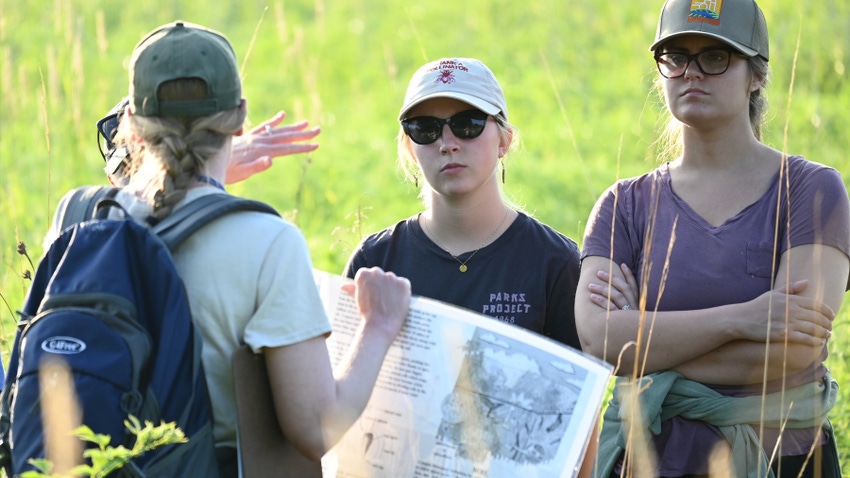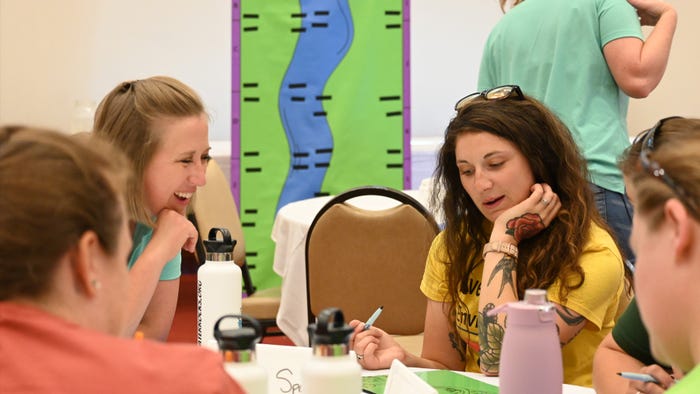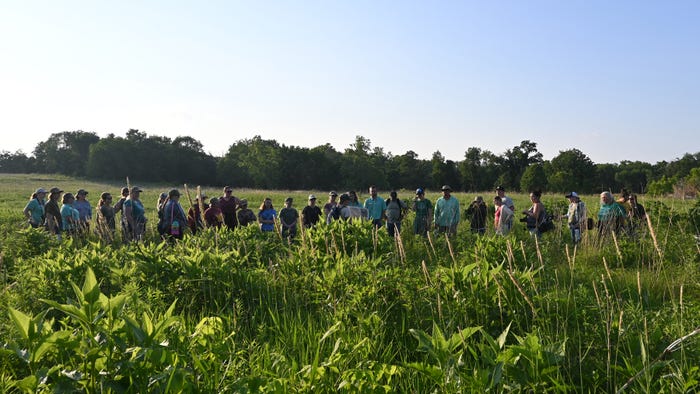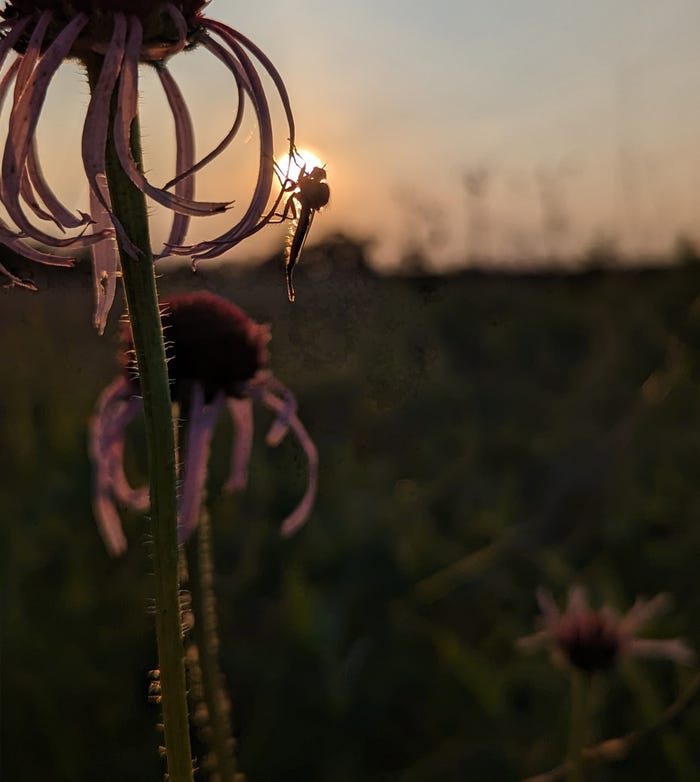July 19, 2023

by Liz Ripley
In late June 2023, 28 educators and conservation professionals gathered on the campus of Iowa State University to learn and experience unique and award-winning approaches for engaging students in learning about water quality, conservation and natural resources from ISU’s Water Rocks! team and a cohort of other ISU researchers and specialists. The Water Rocks Summit is an annual offering of experiences from field surveys and exploration, hands-on demonstrations of lessons and games from the Water Rocks program, and interactive talks with leading experts on conservation, agriculture, water quality and our shared Earth.

COOPERATIVE EDUCATION: Water Rocks director Ann Staudt (left) guides a group including Lexi Spurlin, Upper Loup Natural Resources District in Nebraska, in the Rock Your Watershed activity. (Courtesy of Water Rocks)
“We were delighted to host this energetic and enthusiastic group of educators, who clearly demonstrated their passion for learning and teaching,” said Ann Staudt, Water Rocks director. “The group spanned elementary through high school classroom teachers, to environmental and conservation educators from across Iowa and Nebraska. The energy and chemistry of this group made the summit memorable and fun for all.”
The Water Rocks Summit is designed to introduce participants to the vast collection of teaching resources, plans and lessons developed and used by Water Rocks in its highly successful outreach program. Following the Water Rocks model of engagement and interactive on-your-feet learning, summit attendees participate as students in lessons taught by Water Rocks educators — including playing the games, doing group and individual work, and conducting the hands-on learning activities.

MEETING NATURE UP CLOSE: Water Rocks Summit participants get out and about in the field to explore and learn. (Courtesy of Water Rocks)
Chrystal Houston from the Upper Big Blue Natural Resources District in York, Neb., was particularly complimentary of the lesson modeling. “The hands-on components were really enjoyable, but the approach of training us as if speaking to a group of seventh graders was brilliant. Demonstrating how to use the tools and lessons in this way really cemented the value,” she said.
Experience outdoors
Hands-on learning sessions included We All Live in a Watershed, The Fabulous World of Wetlands, Biodiversity Bonanza and The Power of Pollinators. In addition to experiencing the lessons, summit participants are provided with a full activity kit of teaching materials to take the lessons back to their schools and put their learning into practice.
Cynthia Fischer, a first-year science and math teacher at Essex Middle School in Essex, Iowa, was particularly excited about the learning games and activities. “The games will work really well for middle school students,” she said. “The hopscotch game was fun — despite my twisting an ankle — and the Biodiversity Jenga game is really illustrative and should help my students make connections with science. I’m heading home with lots of new ideas about interactive teaching and tools that will help me be more creative in the classroom.”
Spencer Esslinger and Steph Schares team-teach the Extended Learning Program at Ames Middle School in Ames, Iowa. Both noted that they weren’t certain what to expect, but were delighted with the format and the treasure trove of ideas and resources they left with.
“I was expecting more of a sit-and-listen, lecture-style program covering water quality, the environment and the role that agriculture plays in our state,” Esslinger said. “The hands-on experiences and the interactive teaching and modeling of the lessons were nice surprises.”
“The pace and built-in reflection time were also a great part of the summit program,” Schares added. “We have already begun lesson planning while the material and experiences are fresh in our minds.”

WINNING PHOTO: This is a prizewinning nature photo of an insect in silhouette is by Amy D’Amico from Linn County (Iowa) Conservation. (Amy D'Amico)
Taking students — and summit attendees — beyond the classroom is an important part of Water Rocks programming. During the two-day summit, the group got out and about, visiting McFarland Park in Ames for a guided prairie hike and nature photography workshop. Participants submitted photos taken during the workshop, and the photo taken by Amy D’Amico with Linn County (Iowa) Conservation was selected as the top entry.
They also visited the Tedesco Environmental Learning Corridor in Ames to test water quality in wetlands and stream systems, and the Caton Branch field site adjacent to the Des Moines River near Madrid, Iowa, to observe beaver impacts on stream systems.
Multifaceted education
Rounding out the summit program were guest speakers who covered topics including bees, climate change, wetlands, the interrelationships of agriculture and the environment, and the roles of creativity and imagination in science and natural resources education and outreach.
“The summit is really like our program greenhouse, where we sow the seeds of teaching the Water Rocks! lessons through demonstration and interactive experiences, then send the participants home full of ideas and with the tools they need to put their ideas into action,” Staudt said. “The dynamics of every summit group are different, but seeing the lightbulbs go on and watching the organic networking and teamwork that emerges is so rewarding.”
Ripley is Iowa Learning Farms manager and a Water Rocks conservation outreach specialist.
You May Also Like




